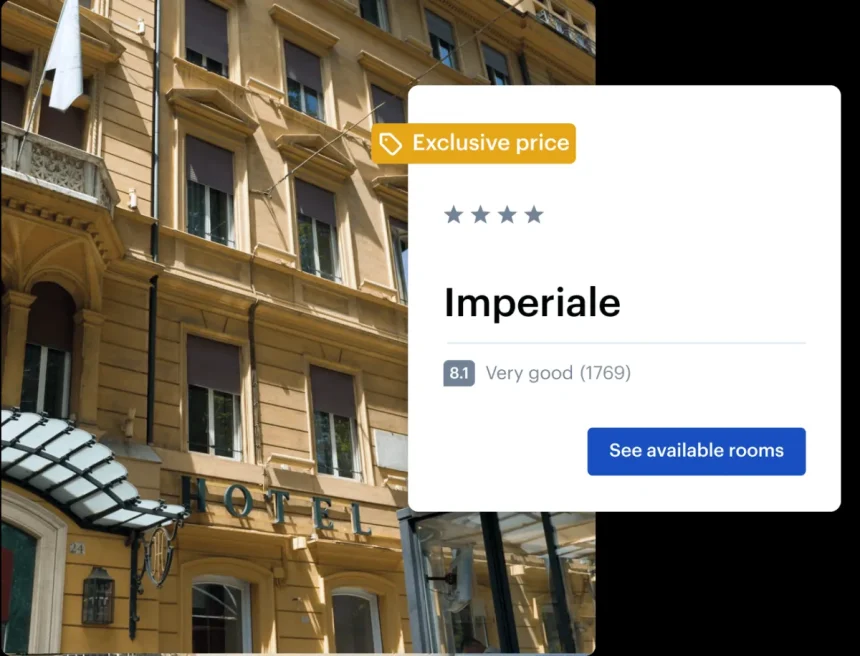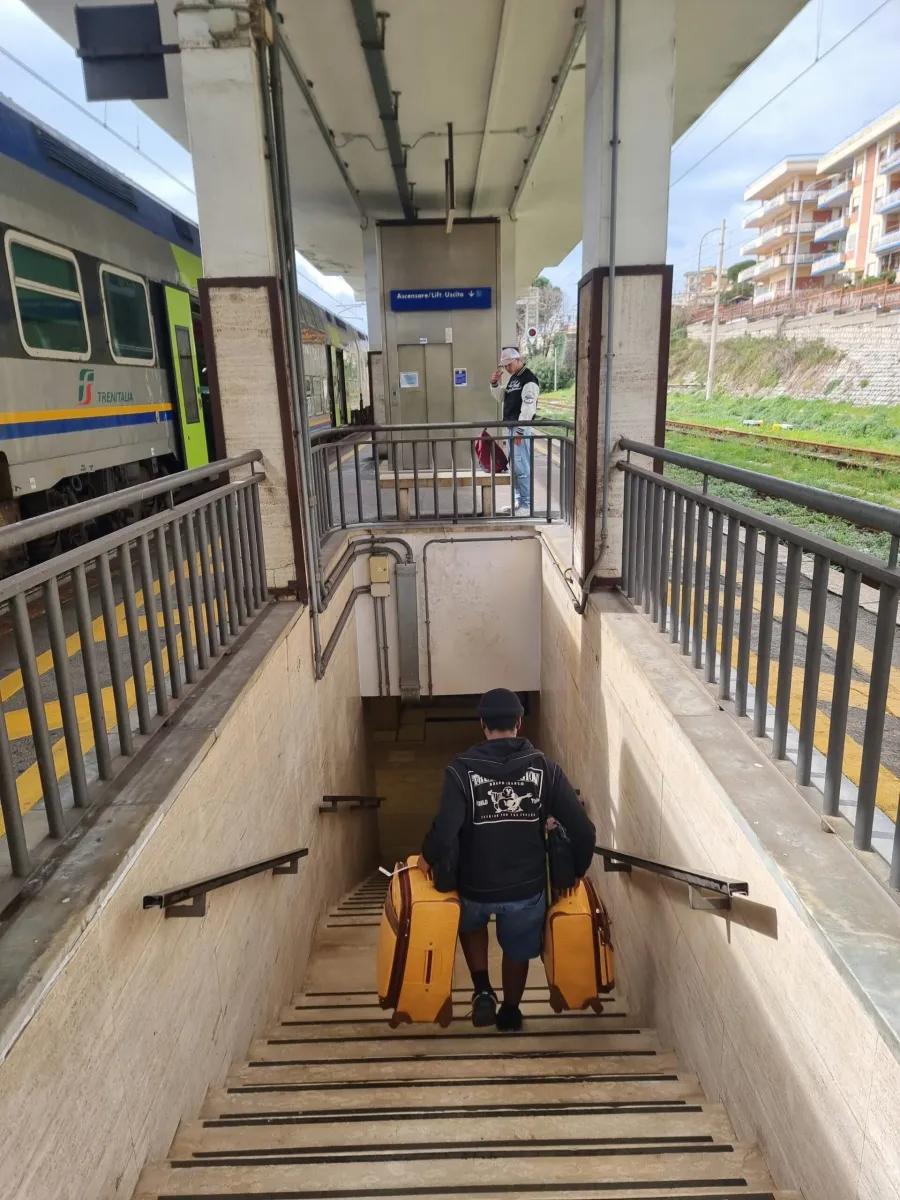Planning your Trip to Italy Choosing the Best Time to Visit
When planning your trip to Italy, picking the right time to visit makes all the difference. The best months are spring (April to June) and fall (September to October). The weather is pleasant, crowds are smaller, and prices tend to be lower compared to peak summer. Summer (July and August) can get very hot and crowded, especially in popular spots like Rome, Florence, and Venice. Winter is quieter and cheaper but can be chilly, particularly in the north.
If you want to experience local festivals or events, check the calendar as Italy has plenty throughout the year. Keep in mind that some attractions may close or have limited hours during holidays like August’s Ferragosto. Planning your trip around these factors will help you enjoy Italy without the stress.
Budget and money tips for Italy
Traveling to Italy doesn’t have to break the bank if you plan smart. Here’s how to save money and handle currency while you’re there.
How to save money in Italy
- Eat like a local: Skip touristy restaurants and look for small trattorias or markets where locals eat. You’ll find authentic food for less.
- Use public transportation: Trains and buses are affordable and cover most places. Avoid taxis unless necessary.
- Book tickets in advance: For museums, tours, and attractions, pre-booking online often saves money and time.
- Stay outside city centers: Accommodation tends to be cheaper a bit farther from major tourist spots.
- Take advantage of free sights: Many churches, parks, and historic squares don’t charge an entry fee.
- Shop at local markets: Buying fresh food or souvenirs here is cheaper than in tourist shops.
Currency exchange advice
- Use an ATM in Italy: Withdraw euros directly from ATMs for better exchange rates than currency exchange offices or airports.
- Avoid airport and hotel exchanges: They usually have poor rates and high fees.
- Use credit cards wisely: Cards are widely accepted, but check for any foreign transaction fees with your bank.
- Carry some cash: Smaller shops and markets often prefer cash, so keep some euros handy.
- Notify your bank: Let them know you’ll be traveling to avoid card blocks or fraud alerts.
Keeping these budget and money tips in mind will help you stretch your dollars while enjoying Italy without stress.
Transportation in Italy
Getting around Italy is pretty straightforward, and your choice depends on where you’re headed and how much time you have.
Getting Around by Train
Trains are often the easiest and fastest way to travel between cities. Italy’s high-speed trains connect major spots like Rome, Florence, Venice, and Milan quickly and comfortably. Regional trains are slower but budget-friendly for short trips. Book tickets in advance for the best prices, especially on high-speed routes.
Using Buses and Taxis
Buses are a solid option in smaller towns or places trains don’t reach. Local buses are cheap but can be slower. In cities, taxis are convenient but can be pricey, especially if you get stuck in traffic. Always use official taxis or ride-hailing apps where available, and agree on fares upfront if meters aren’t used.
Car Rentals and Driving Tips
Renting a car is great if you want to explore countryside areas like Tuscany or the Amalfi Coast at your own pace. Keep in mind:
- Stick to driving in the daytime and avoid city centers where traffic and parking are tough.
- Most cities have ZTL zones (limited traffic areas) where only residents can drive; fines can be steep if you enter by mistake.
- Carry an International Driving Permit along with your U.S. license.
- Roads can be narrow and winding, so drive carefully, especially in rural or coastal areas.
Overall, trains cover most travel needs, but combining options depending on your itinerary gives you flexibility to enjoy Italy fully.
Accommodation options in Italy
When it comes to accommodation in Italy, you’ve got plenty of choices depending on your budget and travel style.
Hotels
Italy has a wide range of hotels, from luxury spots in big cities like Rome and Florence to charming boutique hotels in smaller towns. Booking early can snag you the best rates, especially during peak season. Look for places with good reviews and convenient locations to save time on transportation.
Hostels
If you’re traveling on a budget, hostels are a great option, especially in cities like Milan and Venice. Many hostels offer private rooms along with dorms, making them a flexible choice. They’re also a good way to meet other travelers. Just check recent reviews to ensure cleanliness and safety.
Vacation rentals
Platforms like Airbnb are popular for those wanting a home-away-from-home experience. Vacation rentals provide more space, a kitchen, and often a more local vibe. They are perfect for families or longer stays. Just be sure to book well in advance, as these can fill up fast in tourist hotspots.
Choosing the right accommodation is key to a smooth trip, so consider what fits your itinerary and budget best.
Must Visit Destinations in Italy
When planning your Italy trip, certain cities and regions stand out as must-visit spots. Here’s a quick guide to some of the top destinations and what to focus on.
Rome Sights and Tips
Rome is packed with history and iconic landmarks. Don’t miss the Colosseum, Roman Forum, and Pantheon. Make sure you visit Vatican City to see St. Peter’s Basilica and the Sistine Chapel. To save time, book tickets online in advance. Walk as much as you can to soak in the city’s atmosphere, and try to explore less crowded neighborhoods like Trastevere for authentic dining experiences.
Florence Highlights
Florence is the heart of Renaissance art. Key sights include the Uffizi Gallery, Florence Cathedral (Duomo), and Ponte Vecchio. Climbing to the top of the Duomo offers amazing views. Plan a visit to the Accademia Gallery to see Michelangelo’s David. Florence is compact, so walking is easy and rewarding. Don’t forget to sample local Tuscan cuisine and wine.
Venice Essentials
Venice’s canals and architecture are unforgettable. Ride a gondola or simply walk around St. Mark’s Square and the Doge’s Palace. Avoid crowds by visiting early morning or late evening. Check out the Rialto Market for local life and fresh food. Since Venice has no cars, be prepared to walk a lot or use water taxis.
Exploring the Amalfi Coast
For stunning coastal scenery, head to the Amalfi Coast. Positano, Amalfi town, and Ravello are the main stops. Enjoy beaches, cliffside views, and local seafood. Renting a scooter or using boats to get around saves time and lets you see hidden spots. Keep in mind parking can be tricky during peak season, so plan accordingly.
These destinations each offer a unique slice of Italy’s culture and lifestyle. Whether you’re chasing iconic art, rich history, or breathtaking views, these spots are essential for any Italy itinerary.
Cultural Etiquette and Local Customs
When traveling in Italy, understanding cultural etiquette can really enhance your experience. Italians are warm and proud of their traditions, so a little respect goes a long way.
Dining Manners in Italy
- Meal times matter: Italians eat lunch between 1 and 3 PM, and dinner usually starts around 7:30 to 9 PM. Avoid eating on the go or standing at a bar—meals are social and enjoyed at a table.
- Use utensils properly: Keep your hands visible, hold the fork in the left hand and knife in the right, and don’t rush your meal.
- Bread etiquette: Don’t butter the bread, and use it to mop up sauces only after finishing your main dish.
- Coffee culture: Espresso is a quick pick-me-up, not a large lingering coffee. Avoid ordering “a coffee” after 11 AM; locals prefer cappuccinos only in the morning.
Tipping Guidelines
Tipping isn’t mandatory, but it’s appreciated if you get great service. Here’s a quick guide:
- Restaurants: A 10% tip is generous but not expected. Sometimes, a “coperto” (cover charge) is added to the bill.
- Taxis: Round up the fare or leave a euro or two.
- Hotels: A couple of euros for porters or housekeeping is a nice gesture.
- Don’t stress tipping; just be polite and appreciative.
Language Tips
- Learn basic Italian phrases like “buongiorno” (good morning), “per favore” (please), and “grazie” (thank you). Italians respect visitors who try, even if it’s just a few words.
- English is common in tourist areas, but outside big cities, it’s nicer to use simple Italian.
- Use body language to communicate if you get stuck, but keep gestures respectful.
Getting these local customs right will help you connect better and enjoy Italy like a local.
Food and Drink Advice Must Try Italian Dishes Wine Regions and Local Specialties
When traveling in Italy, food and drink are a big part of the experience. You don’t want to miss out on classic Italian dishes like pizza in Naples, fresh pasta in Bologna, or risotto in Milan. Each region has its own specialties, so try local favorites wherever you are.
Some must-try dishes include:
- Carbonara (Rome) – creamy pasta with eggs, cheese, pancetta, and pepper
- Bistecca alla Fiorentina (Florence) – a thick, juicy T-bone steak cooked rare
- Seafood dishes along the Amalfi Coast and Venice, like grilled fish or squid ink pasta
- Gelato – Italy’s famous ice cream, available in endless flavors
Italy’s wine regions are world-famous. If you enjoy wine, consider visiting or tasting wines from:
- Tuscany – known for Chianti, Brunello di Montalcino, and Vino Nobile
- Piedmont – home of Barolo and Barbaresco, rich red wines
- Veneto – Prosecco and Amarone come from here
- Sicily – offers unique wines like Nero d’Avola
Try regional cheeses like Parmigiano-Reggiano and Mozzarella di Bufala, and don’t skip the olives and cured meats such as prosciutto and salami.
For drinks, apart from wine, don’t miss a classic Italian espresso, aperitivo (like Aperol Spritz), and limoncello if you’re in the south.
Tasting these local dishes and drinks will give you a true taste of Italy beyond the usual tourist spots.
Safety tips and common travel scams
When traveling in Italy, safety is generally good, but it pays to stay alert, especially in crowded tourist spots where pickpocketing is common.
How to stay safe in crowded areas
- Keep your valuables close: Use a money belt or a crossbody bag that zips securely.
- Avoid flashy jewelry and large amounts of cash.
- Be cautious when using your phone or camera in busy places.
- Stick to well-lit and populated areas at night.
- Always watch your bags on public transport and in restaurants.
Avoiding tourist traps
- Be wary of overly friendly strangers offering unsolicited help or deals.
- Avoid restaurants and shops right next to major sights—they often have inflated prices and lower quality.
- Do some research or ask locals for recommendations on where to eat and shop.
- Book popular attractions and tickets in advance to avoid overpriced lines or fake sellers.
- Expect street performers and vendors near tourist hubs, but know that some may pressure you for money or sell cheap fakes.
By using common sense and staying aware, you can avoid scams and enjoy your Italy trip safely. For more helpful advice on travel preparedness, check out these travel tips for first-time flyers.
Packing essentials for Italy What to bring for different seasons Tech gear and adapters
When packing for Italy, keep the season in mind to stay comfortable and prepared. Here’s a quick guide:
Spring and Fall
- Light layers like sweaters and a waterproof jacket
- Comfortable walking shoes for city tours and uneven streets
- A scarf or hat for chilly mornings and evenings
Summer
- Breathable clothes, preferably cotton or linen
- Sunglasses and a hat for sun protection
- Comfortable sandals but also closed shoes for sites like churches
- Sunscreen
Winter
- A warm coat, gloves, and a hat (especially if you visit northern Italy)
- Waterproof boots if you expect rain or snow
- Layered clothing to adjust indoors and outdoors
Tech gear and adapters
- Italy uses type C, F, and L plugs with 230V. A universal adapter with USB ports is a good idea
- Bring a portable charger to keep your phone and camera powered during long days out
- Consider downloading offline maps or travel apps before you leave to avoid relying on Wi-Fi
- If you want to stay connected, an eSIM or international data plan can save you the hassle of hunting Wi-Fi
Packing smart means less stress and more time enjoying everything Italy has to offer.
Using technology on your trip to Italy
Technology can make your Italy travel experience much smoother. To get the most out of your trip, rely on a few key travel apps, and plan how you’ll stay connected.
Best travel apps for Italy
- Google Maps – Great for navigation, public transit info, and walking routes in cities like Rome and Florence.
- Trenitalia and Italo apps – Use these for booking train tickets and checking schedules across Italy.
- Rick Steves Audio Europe – Offers free audio guides for major Italian sights, perfect for exploring historical spots.
- TheFork – Handy for finding and booking restaurants, especially in busy tourist areas.
- Moovit – Helps with local bus and metro info in large cities.
- Google Translate – Essential for quick language help when you get stuck with Italian menus or signs.
Staying connected with eSIMs and Wi-Fi
- eSIMs are a solid choice if your phone supports them. They offer easy data plans without swapping physical SIM cards and can save money compared to international roaming.
- Local SIM cards from providers like TIM or Vodafone are alternatives if you want more data or calling options.
- Free Wi-Fi is common in hotels, cafes, and many public spots, but connections can be spotty or slow, so don’t count solely on it.
- Consider a portable Wi-Fi hotspot if you’ll be moving around a lot and need reliable internet at all times.
By planning your tech setup in advance, you stay connected, get around hassle-free, and enjoy a more relaxed Italy trip.
Useful Travel Tips
Avoiding long lines and dealing with crowds can make a huge difference in your Italy travel experience. Here are some practical tips to help you enjoy your trip without the hassle:
- Book tickets in advance: For popular attractions like the Colosseum in Rome, Uffizi Gallery in Florence, or Doge’s Palace in Venice, buying tickets online ahead of time saves hours of waiting in line.
- Visit early or late: Try to hit major sights right when they open or a couple of hours before closing to avoid peak crowds.
- Use skip-the-line passes: Consider city passes or guided tours that include priority access to busy landmarks.
- Explore lesser-known spots: Italy has plenty of hidden gems where you’ll avoid the crowds but still get an authentic experience.
- Travel off-season: If your schedule allows, visiting during shoulder seasons (spring or fall) means fewer tourists and more relaxed sightseeing.
- Know busy days and times: Weekends and holidays are usually packed, so plan your sightseeing on weekdays when sites are less crowded.
By planning ahead and timing your visits smartly, you’ll get the most out of your Italy itinerary without feeling rushed or overwhelmed.
Insider and Off the Beaten Path Experiences
If you want to see a different side of Italy beyond the usual tourist spots, exploring hidden gems and local festivals is the way to go. Here are some tips to get off the beaten path:
Hidden Gems to Explore
- Matera: Famous for its ancient cave dwellings, this southern town is a UNESCO World Heritage site that not many tourists know about.
- Lecce: Often called the “Florence of the South,” Lecce offers stunning baroque architecture and a relaxed vibe.
- Cinque Terre Trails: Skip the crowds in the villages and hike the scenic trails linking these colorful towns for breathtaking views.
- Umbria: Less touristy than Tuscany, it has charming medieval towns like Spoleto and Orvieto with authentic local life.
Local Festivals and Events
- Venice Carnival: A spectacular annual event filled with masks, costumes, and celebrations.
- Palio di Siena: This intense horse race in Siena’s main square is a must-see for history and culture buffs.
- Eurochocolate Festival in Perugia: A paradise for chocolate lovers, held every October.
- Almond Blossom Festival in Agrigento, Sicily: Celebrate spring with parades, food, and music in this beautiful coastal region.
Taking part in these authentic experiences enriches your Italy itinerary and helps you connect with the culture on a deeper level. To prep for your trip, also check out some useful travel tips for first-time flyers that will make your journey smoother.
Family friendly travel tips
Traveling to Italy with kids can be a great adventure if you plan ahead. Here are some tips to keep the whole family happy and comfortable.
Activities for kids
- Explore interactive museums: Places like the Leonardo da Vinci Museum in Florence or the Explora Children’s Museum in Rome are perfect for curious little minds.
- Visit parks and open spaces: Villa Borghese in Rome and Parco Sempione in Milan offer playgrounds and plenty of room to run around.
- Take fun boat rides: Kids love gondola rides in Venice or boat trips along the Amalfi Coast.
- Enjoy gelato breaks: Treat the family to authentic Italian gelato – it’s a hit with all ages.
- Plan downtime: Balancing sightseeing with relaxed activities like picnics or beach days helps avoid overwhelm.
Navigating Italy with a stroller
- Choose a lightweight stroller: Italian cobblestones and narrow streets can be tricky, so a compact, sturdy stroller is best.
- Be ready for uneven sidewalks: Bring a stroller with good wheels and be prepared to lift it over curbs or steps.
- Use public transportation smartly: Trains and buses often have limited space for strollers; opt for less crowded times when possible.
- Plan accommodations wisely: Pick hotels or rentals with elevators or ground-floor rooms to avoid carrying a stroller up stairs.
- Pack light: Carry only essentials to keep moving smoothly when you have a stroller in tow.
With these family friendly travel tips, your Italy trip can be enjoyable and stress-free for both parents and kids.















